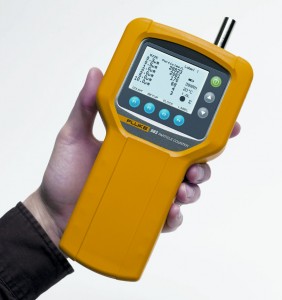Check the air you breathe

Mould spores testing
![]() Moulds produce mycotoxins – these are organic chemicals which are discharged from the mould. These can be toxic to humans and animals. They are toxic primarily by ingestion. Your sense of smell can give you a good indication as to the presence of these and the accompanying mould.
Moulds produce mycotoxins – these are organic chemicals which are discharged from the mould. These can be toxic to humans and animals. They are toxic primarily by ingestion. Your sense of smell can give you a good indication as to the presence of these and the accompanying mould.
![]() Indoor air quality has a major influence on the health, comfort and well-being of building occupants. Poor air quality has been linked to Sick Building Syndrome, reduced productivity in offices and impaired learning in schools.
Indoor air quality has a major influence on the health, comfort and well-being of building occupants. Poor air quality has been linked to Sick Building Syndrome, reduced productivity in offices and impaired learning in schools.
![]() Moulds are microscopic fungi that live on various surfaces when the environmental conditions are suitable. They produce large quantities of spores that become readily airborne and quickly spread in the indoor environment. Mould spores are a natural part of any environment and can be present in large quantities at a certain time of the year. Certain types of mould are specifically toxic to humans and can cause severe allergies and even asthma.
Moulds are microscopic fungi that live on various surfaces when the environmental conditions are suitable. They produce large quantities of spores that become readily airborne and quickly spread in the indoor environment. Mould spores are a natural part of any environment and can be present in large quantities at a certain time of the year. Certain types of mould are specifically toxic to humans and can cause severe allergies and even asthma.
![]() The most common type of toxic mould is Stachybotrys Chartarum which is commonly known as the black mould. This mould likes wet cellulose fibres (wallpaper, decorative items etc) and can grow on wall surfaces, under ceilings, window edges and between ceramic tiles. One strain of Stachybotrys mould is known to produce a poisonous toxin that is fatal to animals, whereas another type is known to be fatal to infants by causing bleeding lungs.
The most common type of toxic mould is Stachybotrys Chartarum which is commonly known as the black mould. This mould likes wet cellulose fibres (wallpaper, decorative items etc) and can grow on wall surfaces, under ceilings, window edges and between ceramic tiles. One strain of Stachybotrys mould is known to produce a poisonous toxin that is fatal to animals, whereas another type is known to be fatal to infants by causing bleeding lungs.
![]() Air quality testing for mould spores is important because poor indoor air quality can lead to negative health effects and reduced quality of life.
Air quality testing for mould spores is important because poor indoor air quality can lead to negative health effects and reduced quality of life.
How does it work?
The results of the air quality test will reveal whether or not there are any pollutants present in the air as well as the concentrations in which they are found. Based on the results of the air quality test, we will be able to recommend an appropriate course of action or remediation.

Airborne particulates come in a variety of forms ranging from animal dander, plant pollen, and airborne bacteria, to fibreglass, asbestos, and combustion particles. Motionless, human beings alone shed up to 500,000 particles(0.3µm) per minute. When active, this level can reach up to 45,000,000 particles per minute. Humidity and temperature play a significant role in the generation rate of these pollutants. To properly identify and troubleshoot IAQ problems, Mould Busters use a tool that not only reads particle concentrations but also provides insight into the environment that causes pollutants to grow.
Why Particle Counts Matter
Different locations have varying levels of acceptable particulate concentrations, driven primarily by health and comfort concerns (i.e. homes, offices, paint booths) or contamination (i.e. hospitals, food and beverage plants, cleanrooms). Excessive levels can result in medical conditions such as Sick Building Syndrome, lower productivity, contaminated product, or all of the above.
Mould air testing helps to locate the infected toxic areas in various parts of the home or workplace. It also gives a more clear picture of the mould problem. It’s best to do a mould inspection from time to time as mould can be hazardous to your health and cause severe damage to your property. Each mould problem is unique and we choose the best methods and techniques to tackle the toxic problem.
Check the air you breathe, Book the air quality testing today.
